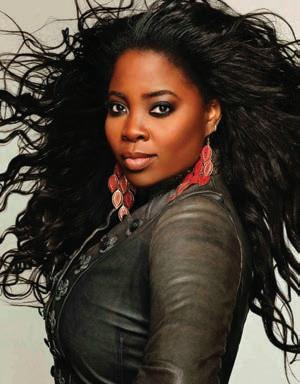
8 minute read
THE HUSTLE
The Beauty Merchants
Blacks Are Making It in the Highly Competitive World of Hair Care
Advertisement
By Kristen Jones
Africans and people of African descent around the world have used hairstyling as a form of expression since the beginning of civilization. Black hair has always been an integral feature of black history and culture. Everything from African tribal styles to dreadlocks and the afro have been thought to have roots that trace back to early African civilizations, such as Egypt, as well as ancient Greece in the case of dreadlocks..
Hairstyles could indicate a person’s family background, tribe or social status. Headdresses and hairstyles indicated status, identities and other circumstances across Africa, including in Cameroon, Ivory Coast and southern Africa. When men from the Wolof tribe (in modern Senegal and The Gambia) went to war, for example, they wore a braided style, while women in mourning would either not “do”their hair or would adopt a subdued style.
During the time of the transAtlantic slave trade to the U.S. (1619-1808), as many as 11,640,000 enslaved people were transported from Africa. What little these slaves were allowed to keep included their hair practices and hair tools—one of which was the wide-tooth comb still used today.
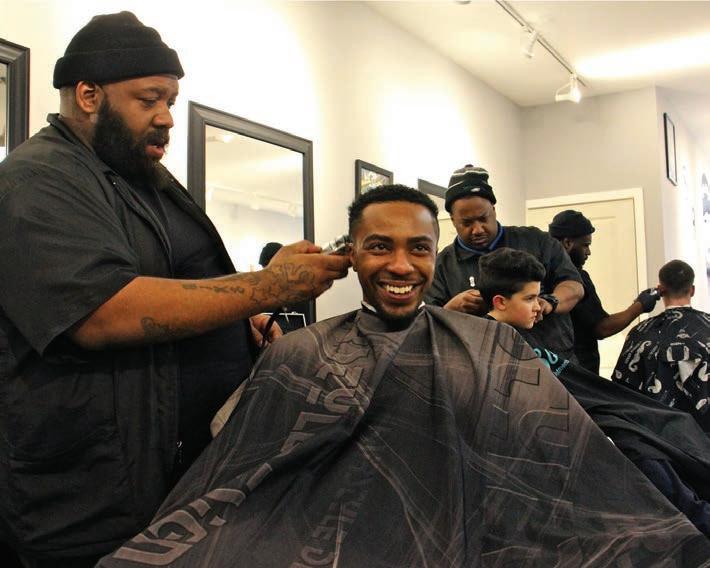
Courtesy of Black Girl Church
photo credit: Emma Lee/WHYY
The Barber Shop and the Beauty Salon: Black America’s Social Clubs and “Social Media”
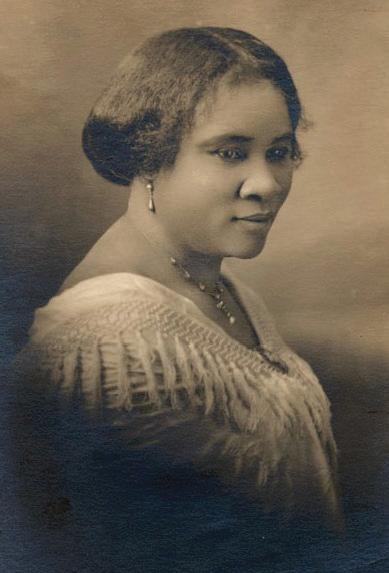
Madam C.J. Walker; Walker’s Wonderful Hair Grower Duke Hair Pomade, the look through the 1960s
Michael Jackson popularized the Jheri curl in the 1980s. Johnson Products’ Afro Sheen ruled the 1970s
Michael Jordan made bald beautiful
LEFT: Dreadlocks date back to ancient Egypt and Greece.
ABOVE: Today’s look, modern mohawk fade with designs.
During the 18th century, traditional African styles were frowned upon, as the desire to conform to white society resulted in black women seeking alternative ways to smooth out their hair texture in hopes of blending in.
Said to be the first entrepreneur of hair products, Anthony Overton, who was born into slavery in 1865, founded the Overton Hygienic Manufacturing Company in 1898. The company initially sold one product, baking powder, but eventually branched into cosmetics, perfumes and toiletries appealing to African American women. Although he went bankrupt as a result of damages to his business from the Kansas River Flood of 1902, Overton resumed manufacturing and selling products, but now to a nationwide (and eventually an international) market that included Egypt, Liberia and Japan. By 1927, his cosmetic business alone employed 150 people, most of whom were black women, in clerical and manufacturing positions. The
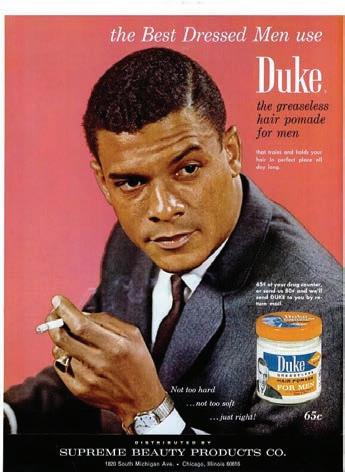
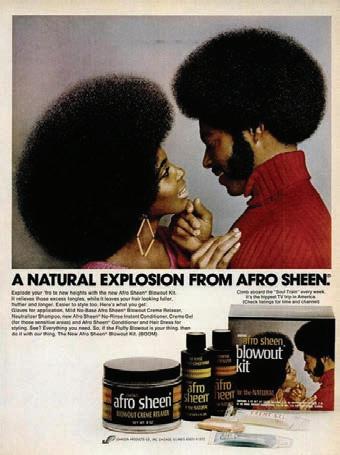
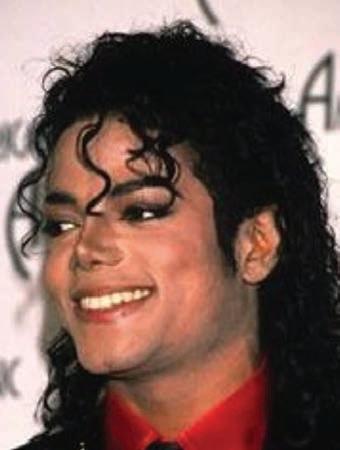
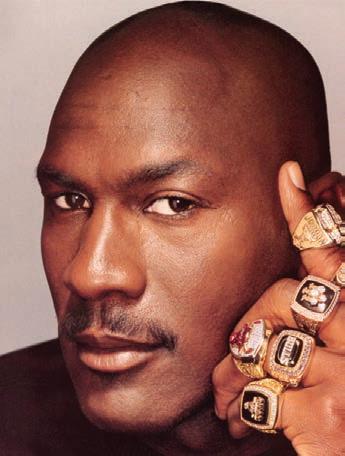
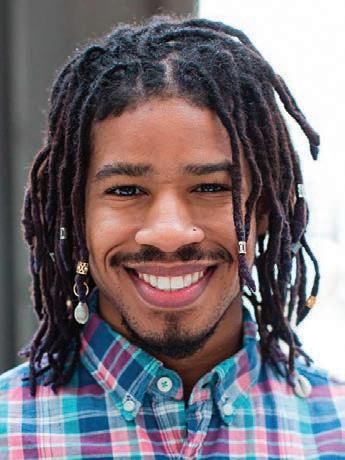
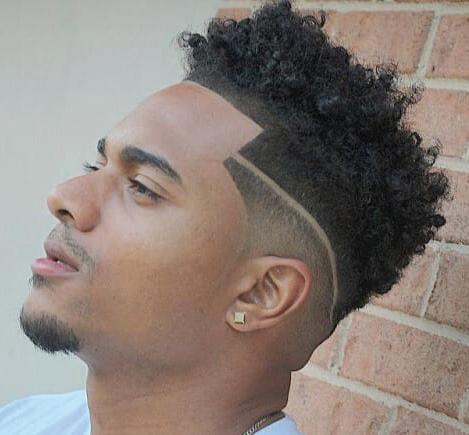
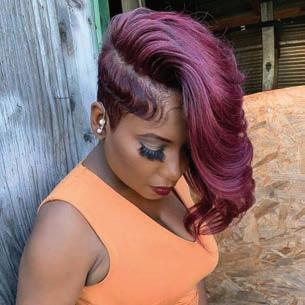
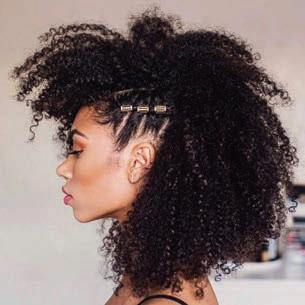
For today’s black women, there are as many hairstyles as there are personalities. cosmetics company was valued at more than one million dollars, and Overton was then the most successful black businessman in the nation.
Make no mistake, African Americans know beauty, and with over a trillion dollars currently being contributed to the industry, it’s safe to say we have always had our hands on what’s new and what’s now. This was even more apparent when in early 1900s America, Annie Turnbo, credited with being the first to discover Madam C.J. Walker, began making haircare products catering to black women. Turnbo, who was sickly as a child, was forced to leave school due to frequent illnesses. While out of school, she grew so fascinated with hair and hair care that she often practiced hairdressing with her sister. With expertise in both chemistry and hair care, Turnbo began to develop her own hair-care products. Her aunt, who was an herbalist, aided her in creating her recipes, which straightened the hair without using harsh chemicals or heavy oils. Some products at the time were using lye, which is a chemical that is known to burn if used incorrectly or if left on the hair too long. Turnbo, however, modernized using products that were healthy for black women’s hair and made a healthy profit in doing so. Her invention, simply called The Wonderful Hair Grower, offered real results to its users and caught the eye of the now-famous Madam Walker, who was in search of a product that would cure her psoriasis and dandruff, which caused her hair to fall out. After subscribing to Turnbo’s recommendations of scalp massage, clean eating, and sulfurbased hair treatments, Walker’s hair grew from ear length to past her shoulders. After Walker moved to Denver in 1905, she herself began marketing hair products based on Turnbo’s, and the two soon became rivals in the hair-care industry. Turnbo even issued a “warning” to potential buyers of Walker’s product telling buyers to “beware of imitations.” Although both women were successful, Turnbo was the first true self-made millionaire. (The title was wrongly given to Walker, who died with a net worth of roughly $600,000.) From the turn of the century to the 1950s, African American hair products were tried and tested on the market, and a new trend developed as blacks grew successful in the hair industry. In 1954, with just $250 in borrowed capital, former production chemist George E. Johnson and his wife, Joan, decided to throw their hat in the ring to supply a previously underserved African American market. Soon, the couple’s new enterprise, Johnson Products Co., shook the world with its line of hair-care products, which were at first geared toward men but eventually blossomed into a billion-dollar business that embraced both sexes with the creation of the household brand Afro Sheen. In the late 1960s and early 1970s, blacks often wore their hair in the then-popular afro hairstyle, and Johnson Products took the opportunity to cater its products to this trend and teach other cosmetologists the proper usage. The Johnsons went on to popularize themselves even more when their company became the exclusive sponsor of the television show Soul Train, which aired in syndication from the 1970s until 2006. In 1971, the company made history as the first African Americanowned company to be listed on the American Stock Exchange. (Johnson Products fell on hard times when the afro went out of style and subsequently declared bankruptcy.)
Along with the afro, dreadlocks remain the most distinctive black hairstyle among other ethnic groups. Ancient Greeks and African Egyptians are said to have worn dreadlocks, and mummies have been found with the locks still intact! When the style became more popular in the late 1970s, it was associated with reggae fans and the Rastafarian culture.
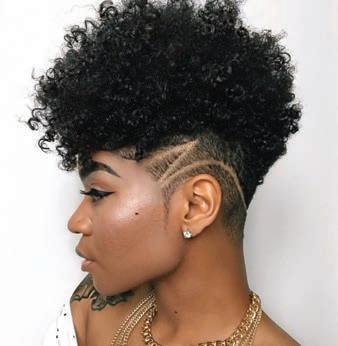

It went on to either be seen as a go-to style for pot smokers or those smelling of patchouli and oils. The late Bob Marley introduced the hairstyle into mainstream culture in the ’70s, with Whoopi Goldberg further popularizing the look in the ’80s. Lauryn Hill and Lenny Kravitz proudly rocked theirs in the ’90s. Toni Morrison and Alice Walker have worn them for as long as we can remember. The style has also been seen lately on red carpets and runways, with some considering nonblacks wearing the style to be cultural appropriation.
After models were seen wearing wigs in the 1960s, wigs were soon seen on city streets and in homes across America. Black women felt the need to emulate their favorite actressor singer, and they saw wigs as an option that could help them do so.
When mentioning the African American beauty industry, the importance of the barber shops and beauty salons that are a staple in black communities across America must be noted. Everything from politics, to music, to fashion, to societal issues can and will be discussed when inside these doors! Patrons are allowed to be themselves and speak their minds without fear of judgement. Some blacks even consider receiving their first haircut or first service from a hair salon a rite of passage. BLOW OUT Ted Gibson and Kimberly Kimble (below), hairstylists extraordinaire and entrepreneurs Hair salons have always been considered the gateway to entrepreneurship for many business-minded black people. With talent and hard work, one can make a name for oneself in the field as well as in the community. Rising stars in the past few years have even made it onto television, on such shows as Shear Genius on cable TV’s Bravo channel.
Kimberly Kimble is one of those salon owners. She opened her first salon in 1995 and learned what it really takes to run a business while continuing to perfect her craft. Kimble snagged her first Hollywood gig on the Halle Berry film B.A.P.S and has been turning heads with her hair-raising styling ever since. Always having a love for beauty and fashion, the Chicago native now has an A-list clientele that brought her to the attention of executives who gave her a reality show that ran from 2012 to 2017. She has paved the way for many other African American women seeking to be hair stylists themselves and has even launched her own products.
Another notable hairstylist, Ted Gibson, made his mark in New York after traveling the world working as an Aveda global educator. He relocated to the Big Apple with his partner and went on to style the heads of many famous actresses and singers. Also a product launcher, Gibson is known as a worldrenowned master stylist who is still paving the way for other gay African American hairstylists.
From wigs to Jheri curls to tapered cuts and braids, African Americans’ hair scene has taken a whirlwind trip while still maintaining its “roots.” In today’s society, many have become entrepreneurs using their skills to give men and women celebrity looks using barbering or cosmetology. False lashes are everywhere, and the addition of human or synthetic hair to create a “hair weave” is popular in America. With the addition of tutorials, the Average Joe or Jane can now learn to master the beauty techniques and products that they can turn into their own business. From selling products door-to-door to becoming full-fledged celebrity stylists, African Americans have taken the beauty industry to another level.
